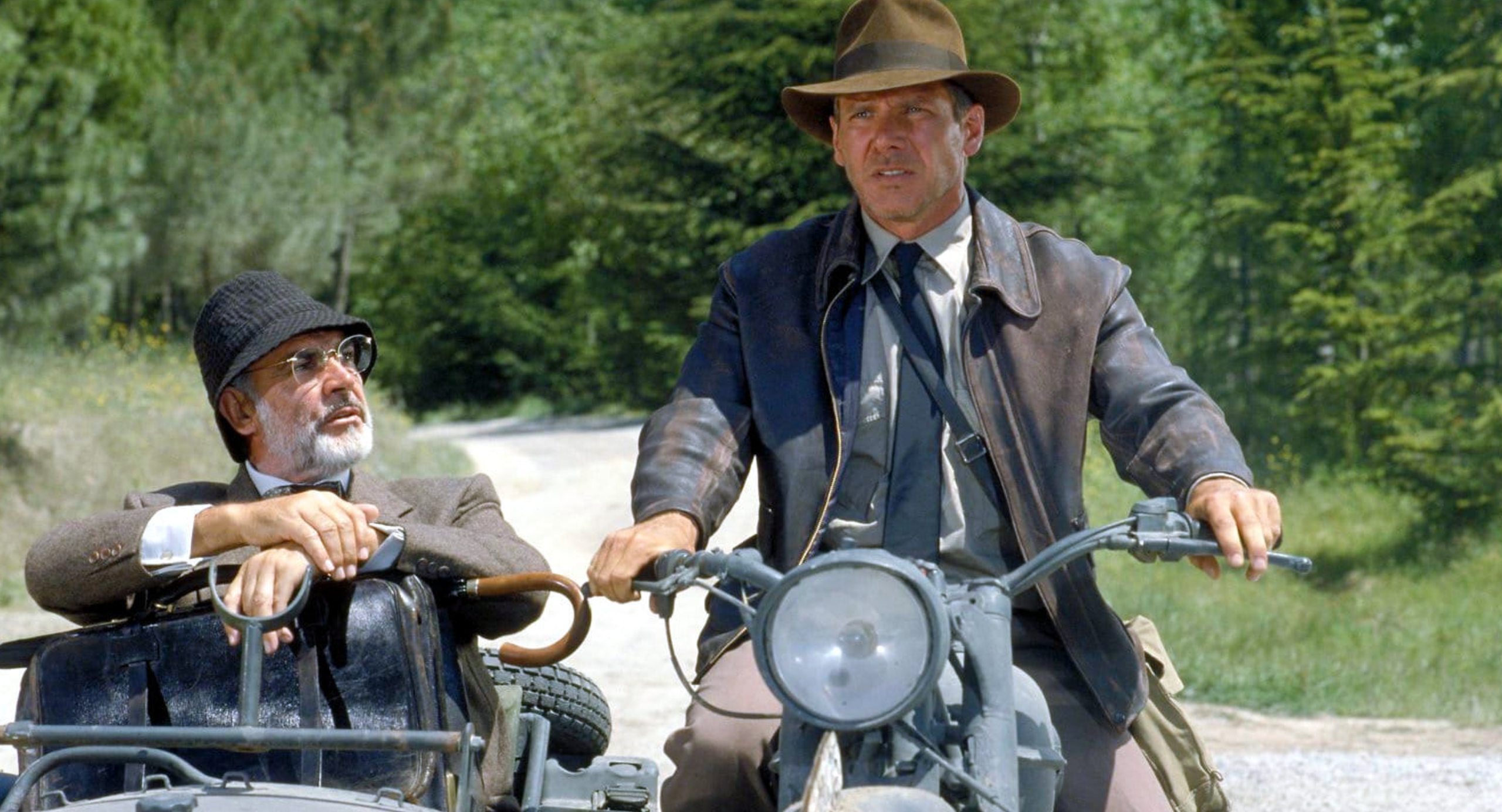Indiana Jones and the Last Crusade – Film Review
Published June 23, 2023

The intrepid explorer Indiana Jones sets out to rescue his father, a medievalist who has vanished while searching for the Holy Grail. Following clues in the old man’s notebook, Indy arrives in Venice, where he enlists the help of a beautiful academic, but they are not the only ones who are on the trail, and some sinister old enemies soon come out of the woodwork.
In the realm of cinematic adventures, there are few franchises that capture the essence of thrilling escapades quite like the Indiana Jones series. Amongst the revered trilogy, Indiana Jones and the Last Crusade stands tall as a shining gem. Directed by the legendary Steven Spielberg, this 1989 film takes audiences on an exhilarating journey that combines history, mythology, action, and humor with remarkable finesse. Crafted with meticulous attention to detail and boasting an exceptional cast, this cinematic masterpiece holds a place of honor in the annals of adventure cinema.
Set in the late 1930s, the film opens with a breathtaking prologue that introduces us to a young Indiana Jones (played by River Phoenix) and his first encounter with treasure hunting. This opening sequence serves as a nostalgic tribute to the character’s origin and perfectly sets the stage for the thrilling adventure to come. The transition from the young Indiana Jones to the older, iconic version played by Harrison Ford is seamlessly executed, showcasing the film’s attention to continuity and respect for its own mythology.
The heart and soul of Indiana Jones and the Last Crusade lie in the dynamic chemistry between Harrison Ford’s Indiana Jones and Sean Connery‘s Professor Henry Jones, Sr. Connery’s portrayal of the absent-minded, yet wise and witty father is a stroke of genius casting. The playful banter and genuine bond between the two actors provide the film with an extra layer of depth and emotional resonance. Their interactions are a delight to watch, bringing both levity and poignancy to the story.
The narrative unfolds as Indiana Jones embarks on a quest to find the Holy Grail, racing against a menacing Nazi regime led by the formidable Colonel Vogel (played by Michael Byrne). The film effortlessly blends historical events, ancient myths, and religious lore, weaving them together into a gripping tapestry of intrigue and excitement. Spielberg’s direction keeps the pacing taut, effortlessly balancing high-stakes action sequences with moments of introspection and character development.
One of the film’s standout elements is its ability to inject humor into the most intense situations. From Indy’s sardonic one-liners to the mishaps that befall him, the humor serves as a welcome respite amidst the thrilling chases and heart-pounding encounters. It is a testament to Spielberg’s directorial prowess that the humor never detracts from the seriousness of the plot but instead adds to the film’s charm and relatability.
The action set pieces in Indiana Jones and the Last Crusade are nothing short of spectacular. Whether it’s Indy’s race against a tank through the desert or his daring rescue from a German castle, each sequence is meticulously crafted and brimming with suspense. Spielberg’s mastery of visual storytelling shines through as he seamlessly integrates practical effects, stunts, and stunning locations to create a sense of authenticity and immersion. The now-iconic scenes, such as Indy’s epic battle atop a moving tank, have become synonymous with the series itself.
A notable strength of the film lies in its attention to historical detail. The narrative incorporates actual historical events and locations, grounding the adventure in a believable world. The film’s exploration of the Knights Templar, the Holy Grail, and the Crusades adds a layer of intellectual engagement, inviting viewers to ponder the intertwining of fact and fiction. Spielberg’s ability to blend history and mythology creates an experience that is not only entertaining but also intellectually stimulating.
The production design and cinematography of Indiana Jones and the Last Crusade are top-notch. The film beautifully captures the grandeur of its diverse settings, from the lush canyons of Utah to the majestic landscapes of Jordan. The attention to detail in recreating historical artifacts and ancient ruins is awe-inspiring, adding a sense of authenticity to the film’s world. The use of practical effects and real locations further enhances the immersive experience, making it feel like the audience is embarking on the adventure alongside the characters.
John Williams‘ iconic score serves as the beating heart of the film. From the familiar opening theme to the soaring crescendos during the action sequences, the music elevates every moment and heightens the emotional impact of the story. Williams’ ability to create melodies that resonate with audiences long after the credits roll is a testament to his talent as a composer.
Indiana Jones and the Last Crusade is a cinematic triumph that effortlessly blends history, mythology, action, and humor. With Spielberg’s masterful direction, the film captures the spirit of adventure, taking viewers on a thrilling journey that remains unmatched in its genre. The exceptional performances, particularly by Harrison Ford and Sean Connery, breathe life into their characters, creating an enduring and endearing on-screen relationship. From its gripping narrative to its breathtaking action sequences, this film stands as a shining example of how to craft a truly unforgettable adventure. Indiana Jones and the Last Crusade is a timeless classic that will continue to captivate audiences for generations to come.
